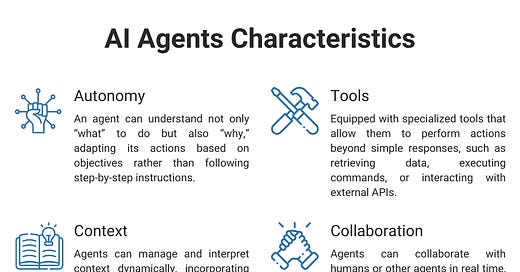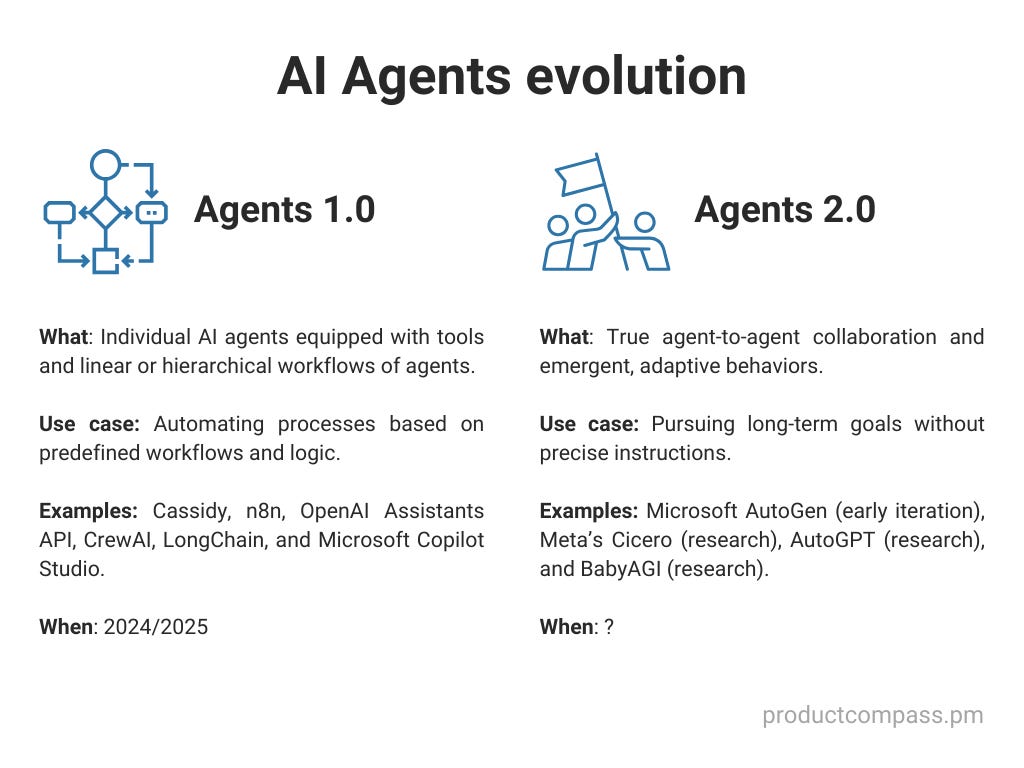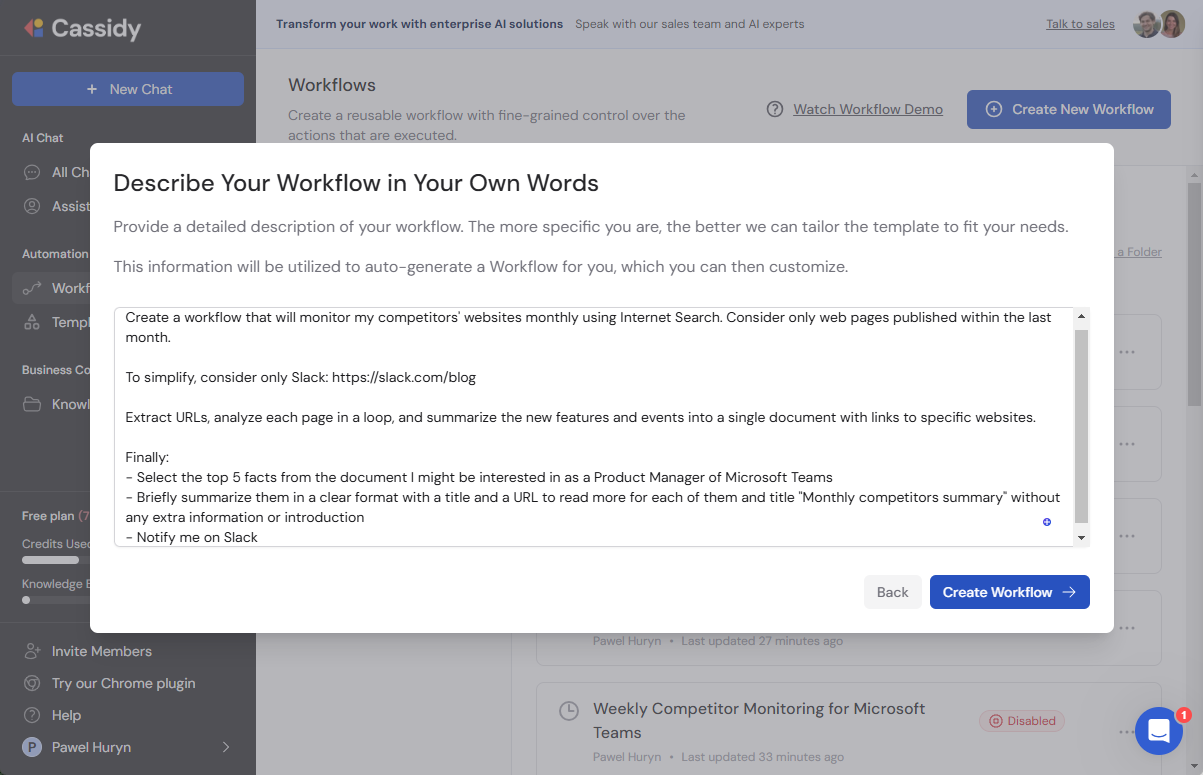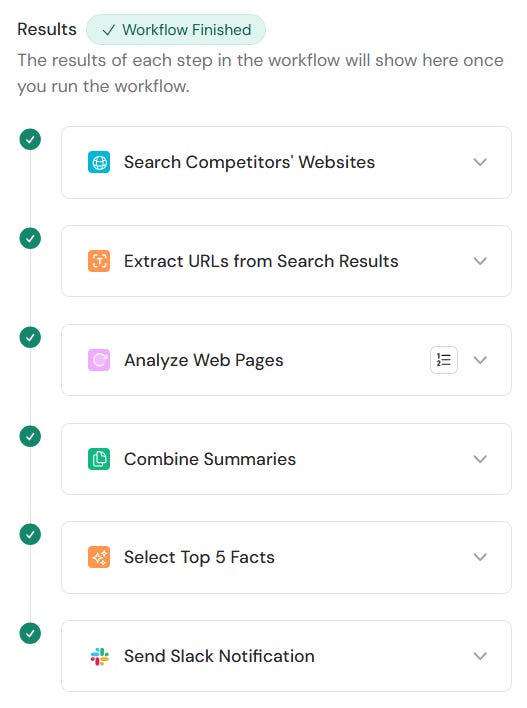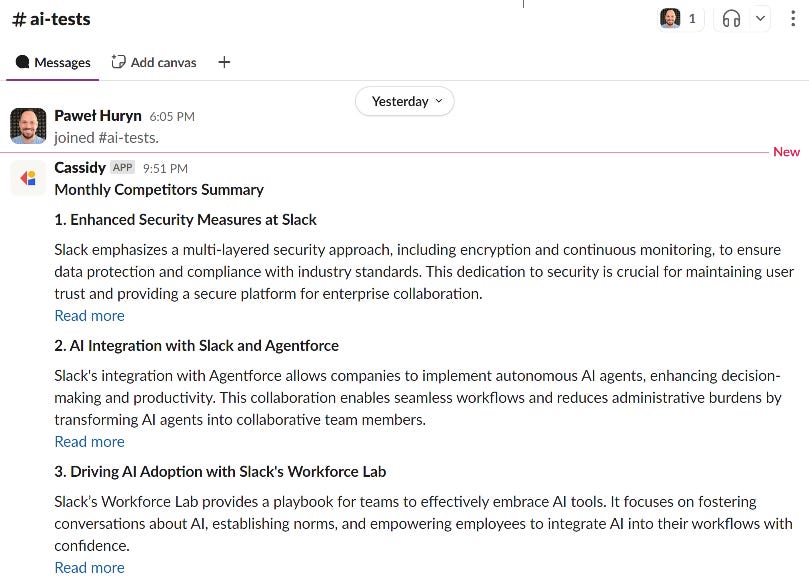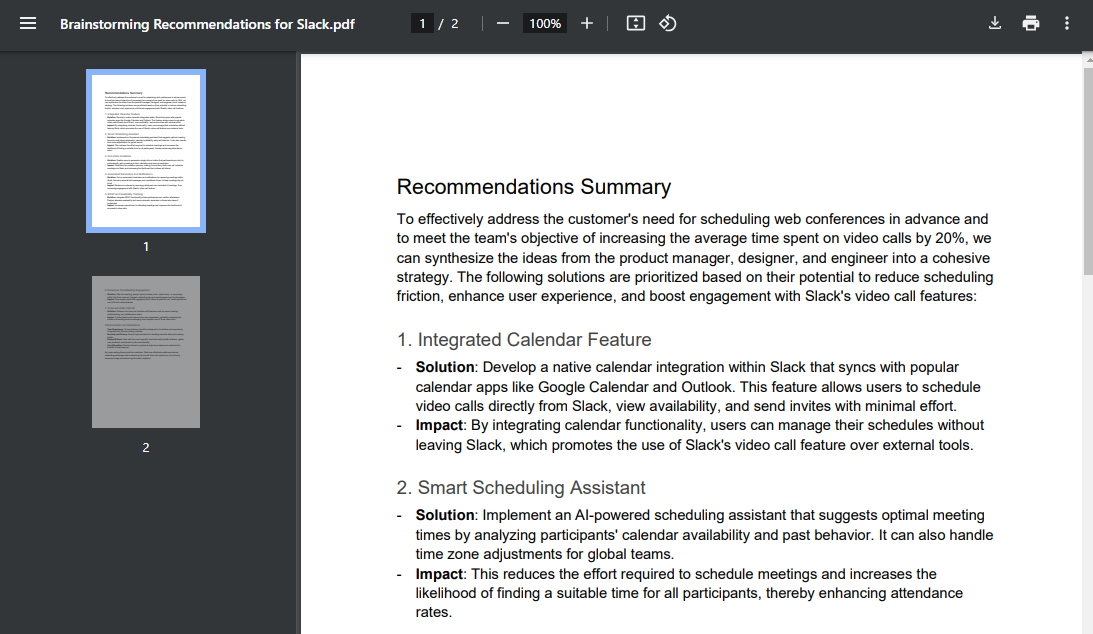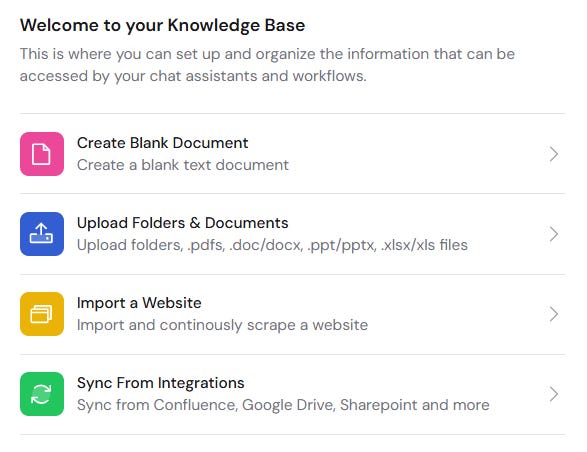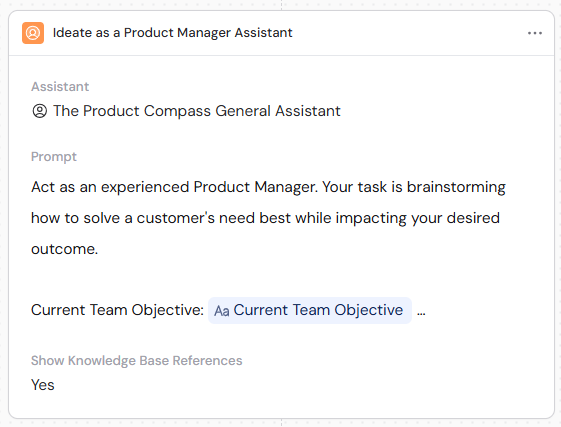Step-By-Step Introduction to AI Agents
How to build agentic workflows with ease, even without a CS degree
Hey, Paweł here. Welcome to the premium edition of The Product Compass!
Every week, I share actionable tips and resources for PMs.
Here are a few posts you might have recently missed:
Introduction to AI PM: Neural Networks, Transformers, and LLMs
5 Steps to Negotiate Your Product Manager Job Offer in a Tough Market
Consider subscribing and upgrading your account for the full experience.
Many are calling 2025 the year of AI agents.
But there’s a lot of noise around what AI agents really are and what they might bring in the future. So, over the last three weeks, I dove into various platforms and built some AI agents myself.
This isn’t a theoretical post. Instead of describing every platform in detail, I’ll share practical examples of things you can actually build—without coding, using free trials, or with a minimal investment (like $2 on the OpenAI API).
This will allow you to experiment, understand what's possible, automate your tasks, and prepare for what's next.
In this post, we discuss:
What Are AI Agents
AI Agents 1.0 and Agentic Workflows
Recommended Platforms With Step-by-Step Examples:
Example 1: AI agent monitoring competitors’ blogs and sending Slack summaries
Example 2: A swarm of diverse AI agents ideating together
Example 3: AI agent creating a PRD based on an email and your Jira backlog
Example 4: AI agent making phone calls and reservations
AI Agents 2.0: The Future
Conclusions
1. What Are AI Agents
In Introduction to AI Product Management, we explored how large language models (LLMs) work. While impressive, they have several limitations:
LLMs respond to individual prompts without considering long-term objectives.
They can’t interact with external tools or environments or perform actions beyond generating text.
They lack real memory. All relevant context must be included within their token limits, restricting the information they can access.
They aren’t designed for collaboration, whether with other LLMs or humans. For example, they can’t delegate tasks.
This is where AI agents come in. Their four key characteristics:
Many chat interfaces, like ChatGPT, can already use simple tools, such as image generation, web search, and code interpretation, while storing basic user information. These features are integrated between the chat interface and language models. For example, user information is included in the input tokens.
2. AI Agents 1.0 and Agentic Workflows
What we can call “AI Agents 1.0” (the term coined by Arseny Shatokhin, which I adapted) are:
Individual AI Agents: These are agents equipped with tools, such as off-the-shelf ChatPRD (product management) and Godmode (sales and marketing), tailored to specific use cases.
Agentic Workflows: The available AI agent frameworks follow linear or hierarchical workflows, where agents collaborate in a structured way. This works well for process-driven tasks, like drafting PRDs or handling customer requests.
Looking ahead, “Agents 2.0” will support true agent collaboration and adaptive, emergent behaviors.
But why should we consider combining agents rather than using a single agent with multiple tools?
Improved Reasoning: When different AI models collaborate, debating or cross-checking each other's outputs, they can make better decisions. Even smaller models may outperform a single big model when combined.
Collective Intelligence: The Mixture of Agents (MoA) approach uses multiple specialized agents to refine each answer, giving more accurate results. Many experiments show that MoA setups achieve higher benchmark scores than individual large models.
More flexibility: Combining agents gives these frameworks greater adaptability, making them well-suited to complex, multi-step workflows.
Cost Efficiency: Using smaller, specialized models in a coordinated way involves lower costs.
Let’s dive into examples of Agents 1.0 that you can replicate without a CS degree:
Example 1: AI agent monitoring competitors’ blogs and sending Slack summaries
Example 2: A swarm of diverse AI agents ideating together
Example 3: AI agent creating a PRD based on an email and your Jira backlog
Example 4: AI agent making phone calls and reservations
This post is not sponsored.
Example 1: AI agent monitoring competitors’ blogs and sending Slack summaries
My goal was to monitor a competitor’s blog regularly and receive a summary of the top 5 key updates (like new features or announcements) on Slack.
For this, I used Cassidy, a popular agentic platform that offers a trial with plenty of free credits.
Instead of building an agent from scratch, I started with a simple prompt:
After a few small adjustments, I had a fully functional workflow up and running in under 4 minutes:
The result (you can see this channel in our private Slack):
If you’d like to try it yourself, here’s a step-by-step guide and configuration:
Example 2: A swarm of diverse AI agents ideating together
My goal was to create a diverse swarm of AI agents that could brainstorm how to solve a customer problem.
I used Cassidy again, but this time, I manually set up the workflow. Here’s the high-level overview:
The workflow starts by asking about your product, your team objective, and a customer need your team wants to tackle.
Next, the Product Manager, Product Designer, and Product Engineer brainstorm individually.
Finally, an AI agent summarizes their recommendations. Alternatively, outputs from each agent could be forwarded to the next agent (yes, this is linear, but this is how you do that in 2024).
Here’s an example output for scheduling web conferences on Slack:
If you’d like to replicate my setup, I’ve included the full configuration and demo here:
Connecting Cassidy to your Knowledge Database
In the second example, the product context was provided as a workflow parameter. But instead of calling generic LLMs, Cassidy workflows can use “Assistants” that access your organization’s knowledge.
The setup is straightforward. For example, we could easily sync Cassidy with an entire help center website, Confluence, or our Google Drive:
Here, you can see a ChatGPT-4o assistant connected to the entire productcompass.pm domain:
We could then use this assistant to brainstorm as a Product Manager rather than relying on the default ChatGPT-4o model:
You could also create dedicated assistants with specialized knowledge to act as Product Managers, Product Designers, or Engineering Assistants.
Example 3: AI agent creating a PRD based on an email and your Jira backlog
My goal was to create an agent that could:
Receive information about a product idea by email.
Use tools like memory and Jira backlog, along with ChatGPT-4o, to draft a PRD.
Reply with the completed PRD.
Keep reading with a 7-day free trial
Subscribe to The Product Compass to keep reading this post and get 7 days of free access to the full post archives.

